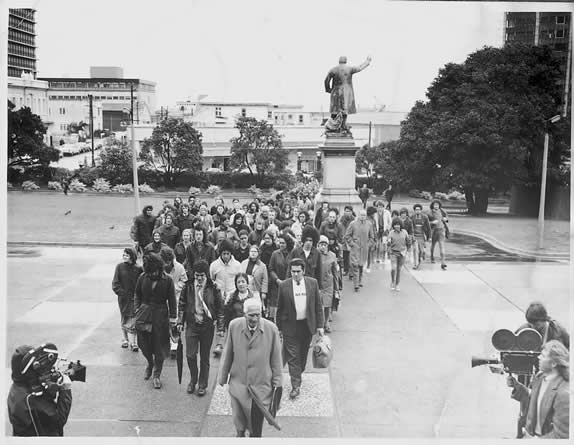
Māori language petition being delivered to Parliament on 14 September 1972. The origins of the petition emerged out of the efforts of Ngā Tamatoa and the Te Reo Māori Society, two university-based groups which sought to have te reo Māori taught in schools. Along with Huinga Rangatahi (the New Zealand Māori Students’ Association), they gathered 30,000 signatures from across Aotearoa on a petition supporting this initiative. The petition was delivered to Parliament with the support of many kaumātua, and 14 September 1972 was declared Māori Language Day. Three years later, it was expanded to Māori Language Week. But there were still many battles to come to save the language.
See community contribtutions below for more information.

Community contributions